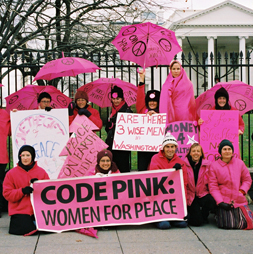- About
- Topics
- Picks
- Audio
- Story
- In-Depth
- Opinion
- News
- Donate
- Signup for our newsletterOur Editors' Best Picks.Send
Read, Debate: Engage.
| December 06, 2018 | |
|---|---|
| topic: | Child rights |
| tags: | #Peacebuilders, #human rights, #United Nation, #Burundi, #Congo, #Thailand, #Syria |
| partner: | NewsDeeply |
| located: | Burundi, Thailand, Democratic Republic of the Congo, Syria |
By Ghazal Keshavarzian, Catherine Thompson
Often, youth in conflict are seen only as collateral damage to the political games of adults. Rather than just thinking of children as victims, it is also necessary to engage with them as potential partners in peacebuilding. In order to sustain peace across generations, funders must invest in youth by incorporating them as key participants of peace processes and peacebuilding strategies.
Historically, U.N. member countries have tended to waver between the “empowerment” of youth or their radicalization, totally missing a young person’s critical role as a peacebuilder. In April 2018, the independent, agenda-setting Progress Study on Youth, Peace and Security was presented to the U.N. Security Council, which may have finally changed this narrative.
In December 2015, the Security Council took one step in that direction by adopting the first resolution to “recognize the important and positive role young women and men play in the maintenance and promotion of international peace and security.” As part of the resolution, the U.N. secretary-general requested a study that looks into youth’s “positive contribution to peace processes and conflict resolution.”
This was one of the first times the U.N. Security Council discussed young people as part of the solution for peace and security, not only as perpetrators or victims of violence, terrorism and unrest. The study found that gender stereotypes play into this decreased agency of young people – think “boy with the gun” and “girl as the victim.” It also refuted assumptions that the “youth bulge” is leading to increased violence, that global migration is leading to increased terrorism and that most young people are associated with violence.
The study is based in part on in-person consultations with over 4,000 youth across 27 countries, including Burundi, Congo, Thailand and Syria, as well as gangs in Chicago and young immigrants in Sweden. It highlights the important contributions youth-led civil society organizations have made in devastated and conflict-affected societies as well as in those enjoying relative peace.
Such contributions, according to the report, include intercommunal dialogue to prevent electoral violence, promoting peace education among young school-aged children, peer-to-peer dialogue in conflict-affected communities, documenting human rights violations during conflict and participation in formal and informal peace processes.
While their work has proven to be effective, these youth-led organizations and groups continue to be restrained by limited funding and support. For this reason, funders and donors should take a page from the Progress Study and follow suit by investing in youth-led peace initiatives.
At $351 million, peace and security funding makes up less than one percent of total philanthropic giving, with funding for children and youth an even smaller percentage. The Progress Study calls for $1.8 billion in investments by 2025 – equal to $1 per young person globally.
The youth, peace and security agenda is in its infancy, so funders have an opportunity to shape this burgeoning field. If funders truly want to create long-term change, start by identifying ways to bring youth into funding strategies. After all, youth are already shaping tomorrow’s world.
Clearly, the funding gap is wide and this is an aspirational, but not impossible, call for funding. Foundations can fund riskier and longer-term investments and play a unique role in engaging local youth groups and activists in a way that U.N. agencies and government cannot. They should step up and do so.
This article originally appeared on Peacebuilding Deeply. You can find the original here.
The views in this article belong to the authors and do not necessarily reflect the editorial policy of FairPlanet.
By copying the embed code below, you agree to adhere to our republishing guidelines.

